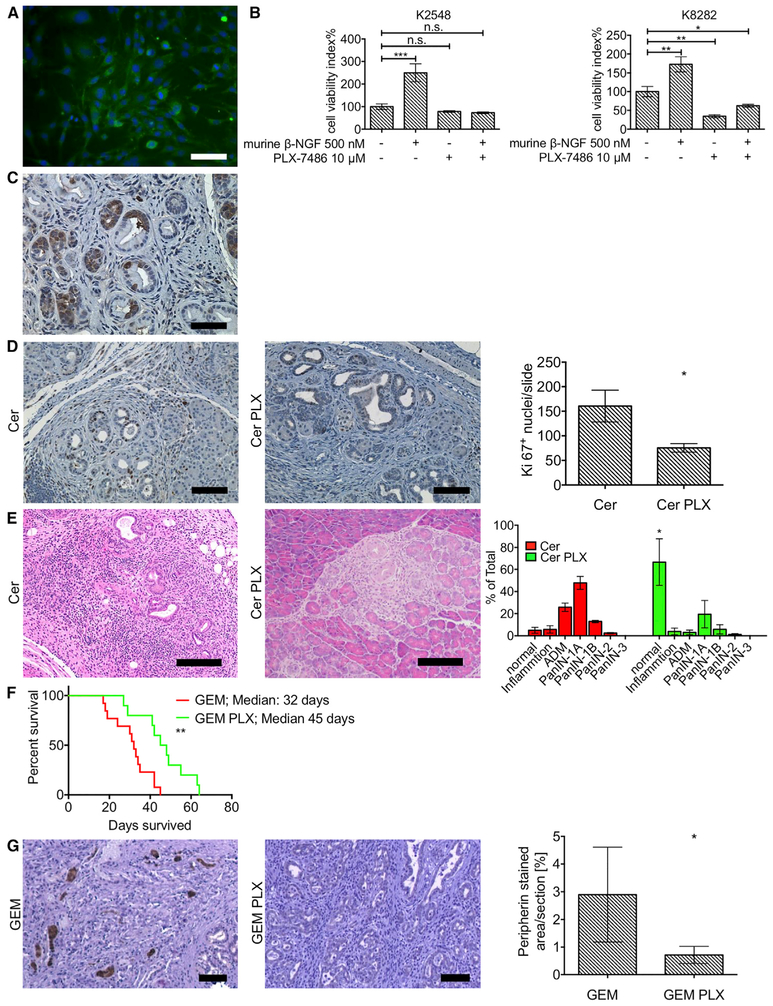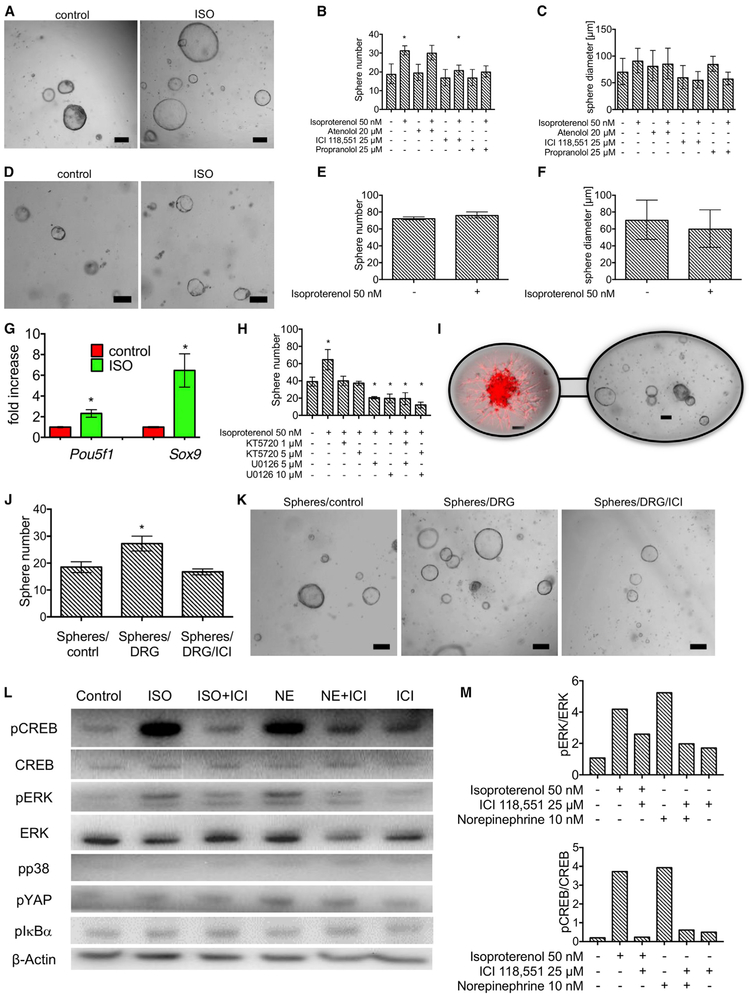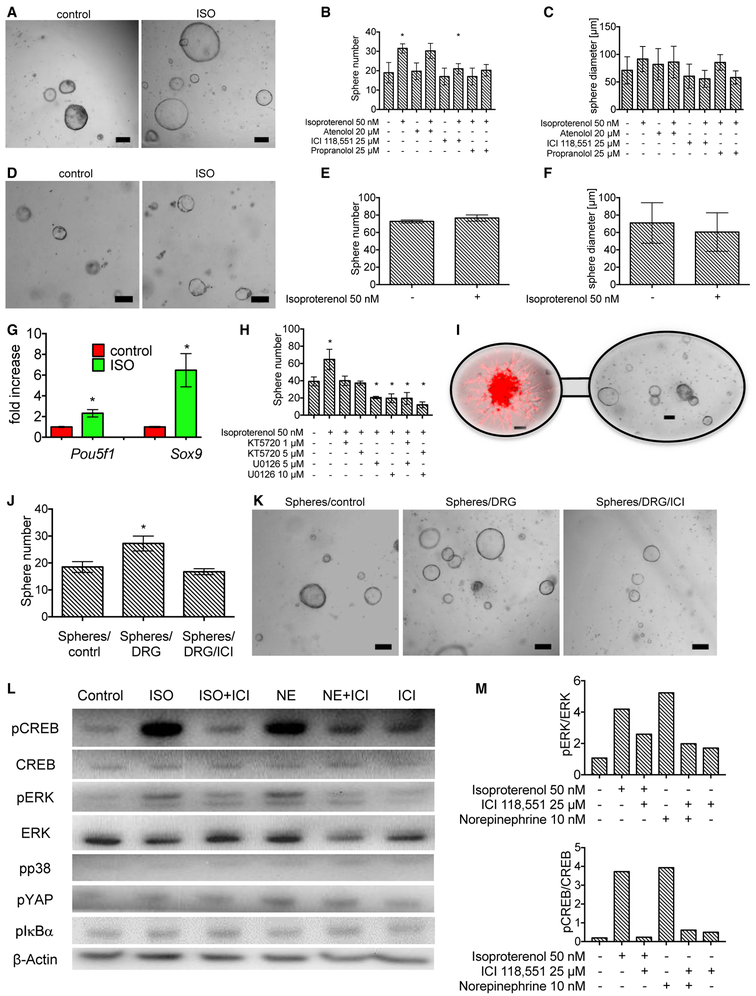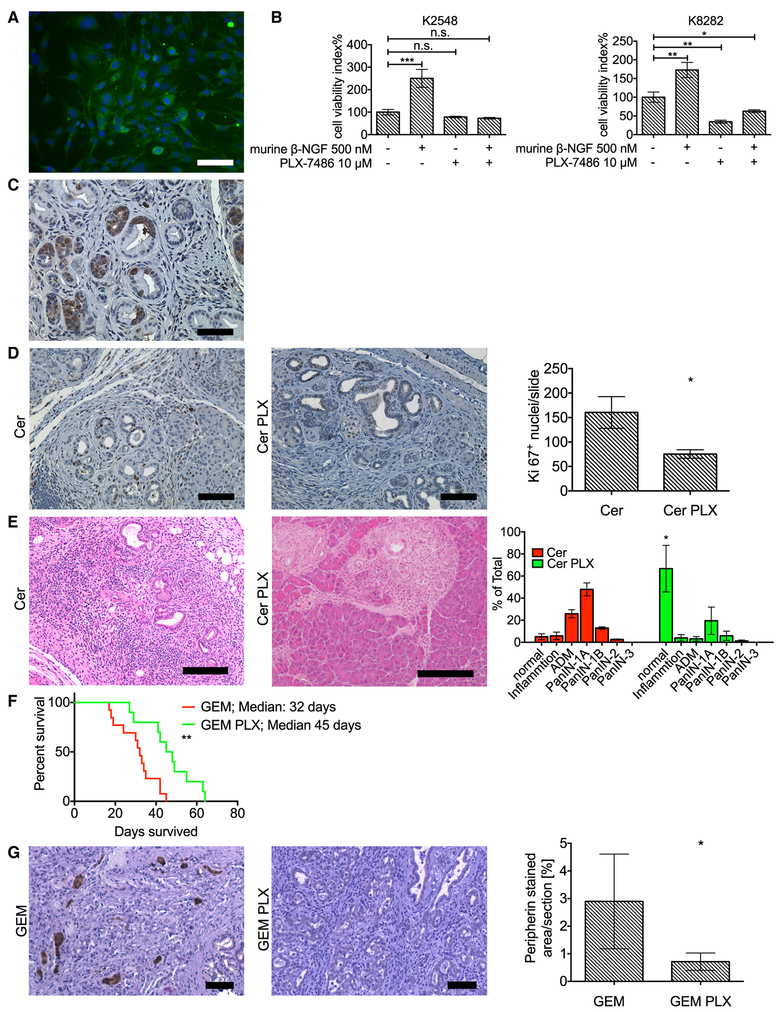In the originally published version of this article, the representative image of pancreatic H&E slides from LSL-Kras+/G12D;Pdx1-Cre (KC) mice at 20 weeks (Figure 1D) and the representative image of pancreatic H&E slides from cerulein-injected KC mice at 20 weeks on PLX-7486-containing diet (Cer PLX) (Figure 5E, right) were the same image. This happened because, during the first revision of our paper, we inadvertently labeled Figure 1D incorrectly and put the same image in both panels. We have gone back and reviewed pathology, and the images are consistent with what we described. We provide here a revised Figure 5, which includes a correct representative image of pancreatic H&E slides from cerulein-injected KC mice at 20 weeks on PLX-7486-containing diet in Figure 5E.
Figure 5.
Blockade of NGF/Trk Pathway Inhibits Proliferation and Innervation and Increases Overall Survival in KPC Mice (corrected)
We also identified two additional errors in Figures 3B and 3C. In the second bar from the right, respectively, Isoproterenol and Prop-anolol treatment was indicated, which is incorrect. These bars depict sphere number and sphere diameter of Propranolol only treated LSL-Kras+/G12D pancreatic spheres treated with an Adeno-Cre virus after 7 days in culture, respectively.
Figure 3.
Catecholamines Promote Acinar to Ductal Metaplasia and Drive Proliferation (corrected)
Both Figure 3 and Figure 5 have now been corrected here and in the online version of the paper. The authors apologize for any confusion these errors may have caused.
Figure 3.
Catecholamines Promote Acinar to Ductal Metaplasia and Drive Proliferation (original)
Figure 5.
Blockade of NGF/Trk Pathway Inhibits Proliferation and Innervation and Increases Overall Survival in KPC Mice (original)






